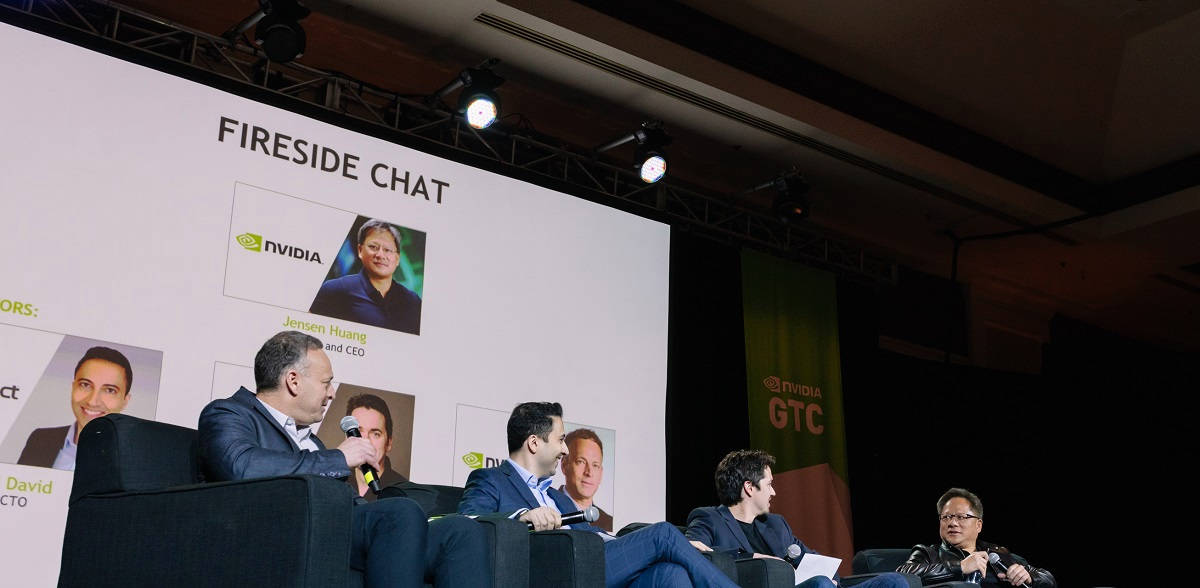Nvidia’s GPU Technology Conference (GTC) kicks off Monday with a keynote speech by CEO Jensen Huang, who has led the company to a market value of $322 billion. The now virtual conference will highlight an ecosystem with millions of developers. Coincidentally, it will run alongside the DevSummit hosted by Arm, which Nvidia has agreed to buy for $40 billion.
More than 200 new AI startups will appear at GTC in some form, Jeff Herbst, VP of business development and head of the Inception virtual AI program at Nvidia, said in an interview with VentureBeat.
“We love startups,” said Herbst. “We’re like a mouthpiece and a helper for the companies. We help them learn from the collective knowledge of the industry. Our ecosystem is growing like a weed. We have passed 2 million developers on our platform.”
If Nvidia gets approval to buy Arm, that developer count will cross 15 million. Nvidia, which evangelizes developers to use its graphics chip and AI technology, has come a long way.
Nvidia’s GPU Technology Conference (GTC) started in 2009 in San Jose, California. I went to the first event and remember it was nowhere close to filling the sprawling San Jose Convention Center. Over the years, I have attended many GTC events, where Herbst drew attention to startups using Nvidia’s tech.
Herbst’s division invests in startups that use Nvidia’s technology, but Nvidia now tends to give away its technology to companies that are getting started with AI or graphics technology. Over the years, Herbst has formed alliances with venture capitalists to help them narrow their focus on the best startups, with Nvidia often investing alongside the VCs.
For many years, Herbst ran a contest for the best GPU (graphics processing unit) startups, but the field became so crowded it was hard to narrow the pack down to a single winner, Herbst said.
“We have over 6,000 companies in the Inception program, and it’s still growing,” Herbst said. “These developers train on our platform for years. It’s becoming more popular, like a flywheel. We have found other ways to help them than to invest money into them.”
GTC has more than 30,000 mostly paid registrants, and it promises to be one of the largest, most complex virtual tech conferences to date, with five days of programming, nearly 24 hours a day, across seven time zones.
More than 1,000 live and prerecorded sessions will be available in 40 topic areas. They will be delivered in one of five languages: English, Mandarin, Japanese, Korean, and Hebrew.
Huang’s keynote will take place from 6 a.m. to 8 a.m. Pacific time on Monday. His talk will cover advances in chips, AI, enterprise and edge computing, robotics, and remote collaboration. He will speak again when he appears with Arm CEO Simon Segars at the Arm DevSummit event Tuesday morning at 8:20 am. Pacific.
Participating organizations include Amazon Web Services, American Express, Audi, BMW, Caltech, Carnegie Mellon University, Facebook AI Research, Google Cloud, IBM, Johns Hopkins University, Lockheed Martin, Microsoft, MIT, Oak Ridge National Labs, OpenAI, Oracle, Sony, VMware, and Volvo.
On Tuesday at 12 p.m. Pacific, Huang will join Herbst at the Inception virtual startup incubator to talk about AI startups. Nvidia uses its Inception program to provide startups with software and hardware without taking an equity stake.
“We’re going to talk about the combination of Nvidia and Mellanox and how we’re approaching things at a system level for compute and storage,” Herbst said. “If AI is about programming using data, the system approach is about facilitating the movement, cleaning, and storage of data. Jensen’s view is that the datacenter is the new compute unit.”

